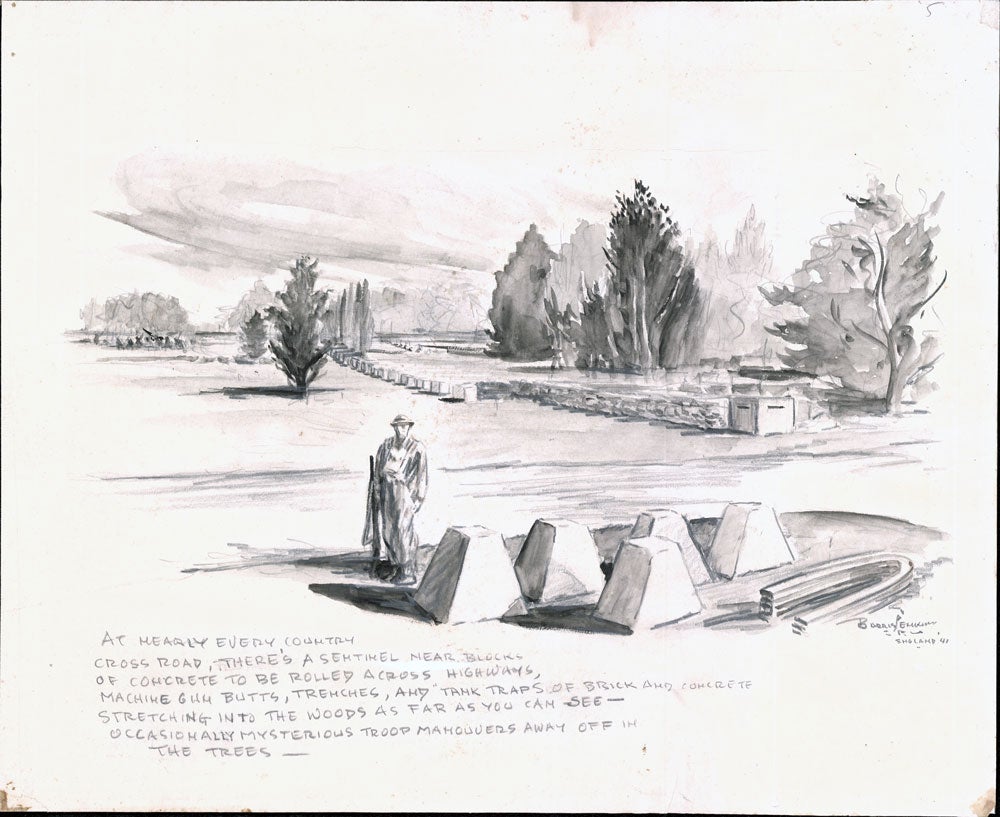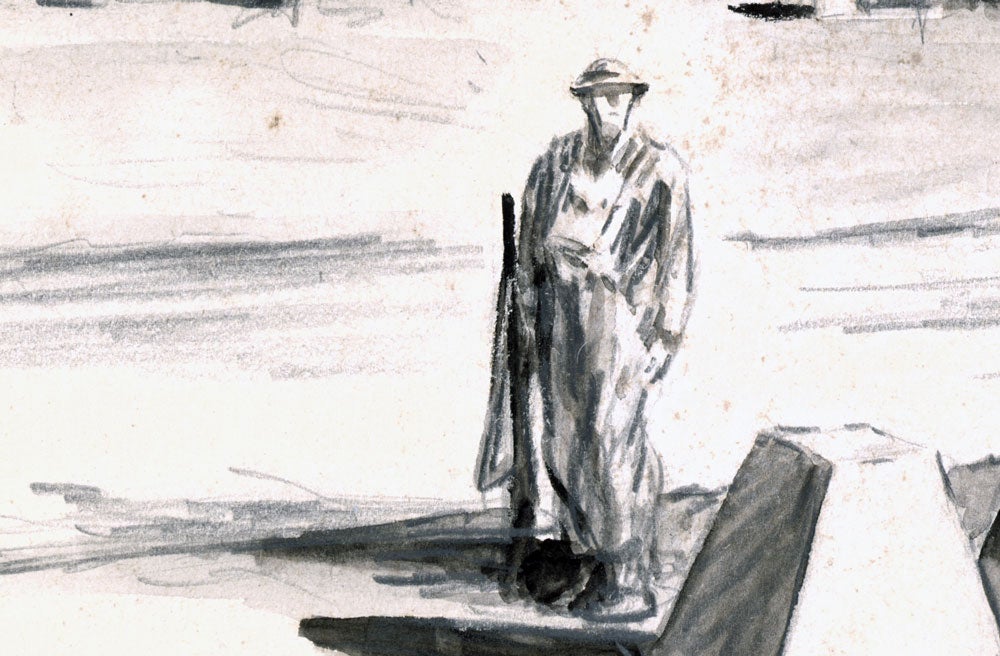
“At Nearly Every Country Crossroad” (March 12, 1941)
by Burris A. Jenkins, Jr. (1897-1966)
12 x 18 in, ink wash and crayon on board
Coppola Collection
Burris Jenkins Jr. was the son of a prominent Kansas City minister, war correspondent and newspaper editor. Jenkins Jr. was a popular sports cartoonist, whose work appeared in the New York Journal-American from 1931. His humorous published verses were also popular. Although best known for his sports themes, Jenkins was also a skilled courtroom illustrator and editorial cartoonist.
Jenkins was not afraid to provoke, and he has some strong WW2 examples, including one of the rare direct commentaries on concentration (death) camps. Among his best-remembered cartoons are his angry piece on the discovery of the dead Lindbergh baby, and his sentimental image of Babe Ruth’s farewell to Yankee Stadium.
He was fired from his first job at the Kansas City Post for a series of pessimistic Christmas cartoons, a firing that prompted his father’s resignation from the same newspaper.
His father was an interesting guy. Jenkins, Sr (1968-1945) was ordained in 1891 and served as a pastor in Indianapolis. He received advanced degrees from Harvard and went on to serve as a professor and president of the University of Indianapolis and president of Kentucky University. He left Kentucky to return to Kansas City as pastor of the Linwood Boulevard Christian Church. The church burned in 1939, and Jenkins chose Frank Lloyd Wright as the architect for the church’s new home overlooking the Country Club Plaza.
Jenkins served as editor of the Kansas City Post from 1919 to 1921, hoping to fight for the establishment of the League of Nations. The Jenkins, Sr., biography tells the story about his leaving the Post slightly differently that for the son: “After two years, it became necessary for him to choose between the newspaper and his pulpit and, without hesitation, he resigned from the Post.”
“Live dangerously!” Jenkins would thunder from the pulpit, embracing his own philosophy against all adversaries. Unconventional in nearly every aspect of his chosen field, Jenkins often preached from non-Biblical texts, such as the latest book or his travels abroad. The church frequently hosted motion pictures, dances, card games, and fundraising boxing matches. These activities led to opposition to Jenkins and his Community Church from other churches in the city.
The War Office did not treat the threat of invasion seriously until the collapse of France in May 1940.
After the evacuation of Dunkirk (May/June 1940), people believed that the threatened invasion could come at almost any time.
The British anti-invasion preparations ramped up fast, and entailed a large-scale division of military and civilian mobilization in response to the threat of invasion by German armed forces. The rapid construction of field fortifications transformed much of the United Kingdom, especially southern England, into a prepared battlefield.
By early 1941, in towns and villages, invasion committees were formed to cooperate with the military and plan for the worst should their communities be isolated or occupied.
When Germany invaded the Soviet Union, in June 1941, it came to be seen as unlikely that there would be any attempted landing as long as that conflict was undecided. In July 1941, construction of field fortifications was greatly reduced and concentration given to the possibility of a raid in force rather than a full-scale invasion.
And as it turned out, the German invasion plan, Operation Sea Lion, was never taken beyond the preliminary assembly of forces.


